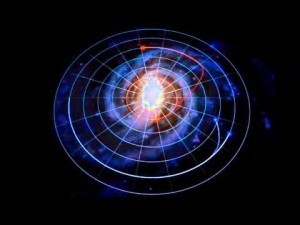When we look in the night sky, we can see hundreds of stars. In remote and dark areas we can see a few thousand stars with the naked eye. But imagine a night so bare you could only see a couple dozen stars. Most of them distant and dim. This would be our sky if our solar system existed in an ultra-diffuse galaxy.
Our galaxy spans 100,000 light years, and contains nearly 400 billion stars. Ultra-diffuse galaxies can have a similar size, but only contain a few billion stars. They are so fluffy that they raise several questions. Since these galaxies contain so few stars despite their size, they either failed to produce stars during their evolution, or they had most of their stars stripped away by some cosmic event. Then there is the question of how long they can last. With fewer stars, the galaxies aren’t tightly bound by gravity compared to galaxies like the Milky Way. Recently in an attempt to answer some of these questions, a team of astronomers found an interesting clue.
These diffuse galaxies are also known as low surface brightness galaxies. Because they have fewer stars, they aren’t as bright as other galaxies of similar size. The team looked at 89 of these galaxies in a dense supercluster of galaxies known as the Perseus cluster. Since the Perseus cluster has many large and dense galaxies, we would expect that diffuse galaxies would tend to be torn apart by the gravity of more massive galaxies. But the team found that many of the diffuse galaxies were largely intact. In order to survive the tidal forces of nearby galaxies, they must have much more mass than their stars alone, and that means they likely contain large amounts of dark matter.
If that’s the case, it could also explain why they contain so few stars. These diffuse galaxies could have formed with a mass similar to our Milky Way, but with much less gas and dust, producing much fewer stars. To know for sure we’ll need a better understanding of dark matter, but that’s another story.
Paper: C. Wittmann, et al. A population of faint low surface brightness galaxies in the Perseus cluster core. MNRAS, 470, 1512 (2017)











